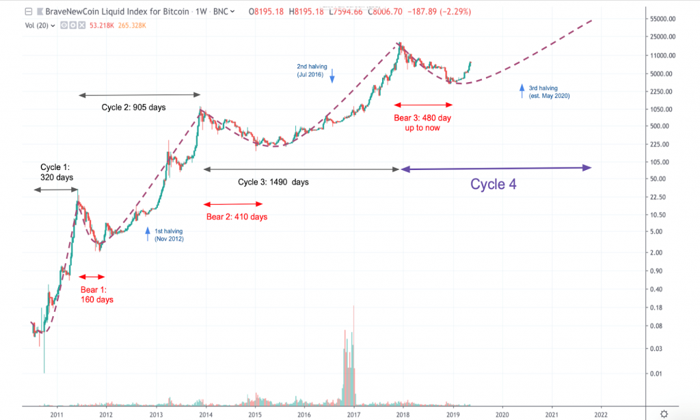The recent **Mantra OM token crash** has sent shockwaves through the cryptocurrency landscape, marking a staggering 90% decline in its value in mere hours. This dramatic selloff has left many investors reeling, reminiscent of past crypto market crashes that have shaken confidence in digital assets. A series of forced liquidations on exchanges contributed to this swift downturn, amplifying the **OM token price drop** and prompting a surge in speculation across crypto communities. As traders sought clarity amidst the chaos, insights from the **Mantra crypto news** cycle revealed the team’s belief that the downturn was not reflective of the project’s underlying strength. With over $50 million in liquidations plaguing OM-tracked futures, this event serves as a stark reminder of the vulnerability present in the current crypto environment.
In the wake of the catastrophic decline of the OM token, many are left questioning the stability of the broader cryptocurrency market. The sudden downturn in the value of this asset has been attributed to unexpected sell-offs and the impact of forced liquidations that led to a rapid drop without any apparent catalyst. Investors are now acutely aware of the risks associated with trading in low liquidity periods, which can exacerbate price volatility. As discussions swirl around the implications of this event for future digital asset investments, the Mantra team’s assurances about the project’s fundamentals stand in sharp contrast to the reality faced by traders. The ripple effect of the OM price dip continues to resonate, emphasizing the need for caution and thorough market analysis in the ever-evolving crypto landscape.
Understanding the OM Token Crash: Causes and Implications
The recent crash of Mantra’s OM token has sent shockwaves through the crypto community, plunging nearly 90% in just a matter of hours. This significant decline can be attributed to a series of forced liquidations initiated by centralized exchanges, leading to considerable market disturbance. As a result, over $50 million in OM-tracked futures were liquidated, illustrating the precarious nature of leveraged positions in the cryptocurrency market. The co-founder, John Patrick Mullin, stated that these liquidations were not reflective of the Mantra project’s fundamentals, but instead were caused by external factors affecting the liquidity of the OM token.
In the larger context of the crypto market, the OM token selloff serves as a grim reminder of how fragile these investments can be. During low liquidity times, low trading volumes can exacerbate price movements, causing drastic fluctuations that can catch traders off guard. This incident recalls past market events, such as the collapse of Terra’s LUNA, where sudden price drops occurred without an apparent catalyst. Understanding the intricate dynamics of forced liquidations and their impact on asset prices is crucial for traders and investors navigating the volatile landscape of cryptocurrencies.
The Role of Centralized Exchanges in Crypto Market Dynamics
Centralized exchanges play a pivotal role in the functioning of the cryptocurrency market, often acting as the primary platform for trading and liquidating digital assets. In the case of Mantra’s OM token crash, allegations emerged that these exchanges were responsible for triggering forced liquidations which negatively impacted a significant number of traders. This incident highlights the power that centralized entities wield over the market, raising questions about their responsibility and the potential need for reform in how these platforms operate. Traders need to remain vigilant, understanding how centralized exchanges can influence market dynamics and liquidity.
Moreover, the involvement of notable figures in the crypto space, such as OKX founder Star Xu, has added an additional layer of scrutiny to the events surrounding the OM token crash. With accusations of intentional market manipulation arising from centralized exchanges, the community is calling for transparency in trading activities. A public examination of on-chain unlock and deposit data could shed light on the activities leading up to the selloff, empowering traders with the knowledge to make informed decisions in the face of potential market volatility. Such insights are vital for safeguarding investor interests in a landscape riddled with unpredictability.
Market Reactions: Crypto Community’s Response to the OM Token Incident
The reaction from the crypto community following the OM token crash has been one of skepticism and concern. Many users have taken to social media to voice their opinions, with a mix of support for the Mantra team and backlash against centralized exchanges. The sentiment is palpable as traders grapple with the implications of such a dramatic price drop, leading to heightened discussions around market integrity. Conspiracy theories proliferate in coordinated crypto circles, indicating a growing fear over the reliability of digital assets tied to centralized platforms.
In the wake of this unforeseen selloff, community members have emphasized the need for more robust protections against forced liquidations and market manipulation. The narrative that centralized exchanges can unilaterally trigger massive price drops raises significant alarms about the current state of the market. As a collective response, many are advocating for decentralized options in trading to reduce reliance on centralized exchanges, which could lead to improved stability within the crypto market. This incident could potentially catalyze a shift in how traders approach liquidity and asset management in the future.
Future of Mantra’s OM Token: Recovery Prospects and Challenges
As the dust begins to settle following the catastrophic crash of Mantra’s OM token, questions around the future and recovery of the token loom large. The Mantra team remains steadfast in their assertion that the fundamentals of the project remain strong despite the market tumult, indicating confidence in the long-term viability of their crypto asset. Recovery prospects hinge on various factors, including re-establishing investor trust and illuminating the circumstances underlining the liquidations that led to the price drop.
However, the path to recovery is fraught with challenges. The memory of the OM token crash will linger in the minds of traders, and confidence in the asset may take time to rebuild. As Mantra continues to engage with the community regarding these issues, a transparent approach could prove beneficial. This situation underscores the necessity for token creators to proactively address vulnerabilities within their ecosystems and advocate for enhanced market protections that could prevent a repeat of such distressing events.
Lessons Learned from the OM Token Price Drop
The dramatic price drop of Mantra’s OM token serves as a vital learning opportunity for both new and seasoned investors in the cryptocurrency space. One critical lesson is the importance of understanding leveraged trading and the potential risks involved. Traders often exploit the ability to trade on margin, which can lead to suppressed volatility; however, as recent events have shown, overly aggressive positions can backfire, resulting in forced liquidations that cascade through the market, as witnessed with the OM token selloff.
Furthermore, the incident emphasizes the need for due diligence and awareness of market conditions before executing trades, especially in low liquidity periods. Buyers and sellers should remain cognizant of how external factors affecting centralized exchanges can impact their investments. By learning from the circumstances surrounding the OM token crash, traders can better navigate future market conditions and make more informed decisions regarding their digital assets.
Implications for Crypto Regulation Post-OM Token Incident
In light of the recent OM token crash, the implications for regulatory scrutiny in the cryptocurrency market become a pressing topic of discussion. The allegations surrounding forced liquidations by centralized exchanges raise critical questions regarding the necessity for improved regulatory frameworks designed to protect investors from significant volatility and manipulation. Policymakers may be compelled to examine not only the trading practices of these exchanges but also establish guidelines for their role in safeguarding market integrity.
Future regulations could potentially include stricter requirements for transparency in trading processes and a clearer understanding of the mechanisms behind forced liquidations. Cryptocurrency regulations thus remain a double-edged sword, as they could enhance investor protections but may also stifle innovation if imposed stringently. The ongoing dialogue initiated by incidents like the OM token crash serves as a catalyst for future legislation aimed at fostering a secure, equitable marketplace for all participants.
Understanding the Impact of Forced Liquidations on Cryptocurrency
Forced liquidations play a critical role in the volatility of cryptocurrency markets. This phenomenon occurs when traders fail to maintain their margin requirements, leading exchanges to automatically close their positions to mitigate further losses. The recent selloff of Mantra’s OM token highlighted how swift and extreme these liquidations can be, especially during low liquidity periods where even small sell orders can trigger disproportionate price movements. As market depth diminishes, the susceptibility to forced sales increases, leading to massive price swings.
For stakeholders in the crypto ecosystem, understanding forced liquidations is paramount for risk management. Traders need to employ strategies that account for market dynamics, especially during periods of reduced liquidity. Enhanced educational resources focusing on margin trading and liquidation risks could help reduce the instances of such distressing market events in the future. Ultimately, fostering a culture of informed trading practices could mitigate the risk that forced liquidations pose to the overall stability of the cryptocurrency market.
Mantra’s Place in the Broader Crypto Landscape
Despite the recent turmoil surrounding the OM token crash, Mantra remains an innovative player within the broader crypto landscape. The company’s focus on tokenizing real-world assets (RWAs) provides a unique proposition that addresses the growing interest in compliant digital investments. From real estate to commodities, Mantra’s offering represents an intersection of traditional finance and cutting-edge blockchain technology. Their partnerships, such as the recent collaboration with DAMAC Group, underscore their commitment to leveraging blockchain for tangible asset management.
However, the current challenges posed by significant price volatility also require Mantra to reassess its strategies and communication with the investor community. Maintaining transparency and instilling confidence in the OM token will be crucial as the project looks toward the future. By strategically positioning itself amidst these challenges, Mantra can not only recover from this setback but may also pave the way for broader acceptance of tokenized assets in the financial ecosystem.
Navigating Investor Sentiments in the Aftermath of OM Token Crash
Investor sentiment often shapes market dynamics, especially in the wake of sudden price movements. Following the OM token crash, market participants expressed a mix of fear and skepticism, which can have lasting implications for the token’s recovery. Rebuilding trust among the community will require effective communication from the Mantra team, addressing concerns, and clarifying the circumstances surrounding the liquidation events. By engaging directly with investors and providing regular updates, Mantra can work towards alleviating fears and reinforcing confidence in their project.
Moreover, examining sentiment analysis on social media platforms and financial news outlets can provide valuable insights into how the OM token is perceived moving forward. Investors often react emotionally to market crashes, which may lead to hasty decisions that could further hinder recovery efforts. By fostering an informed and rational dialogue, Mantra can help guide stakeholders through the tumultuous post-crash environment, encouraging a focus on long-term potential rather than short-term losses.
Frequently Asked Questions
What caused the Mantra OM token crash?
The crash of the Mantra OM token was primarily attributed to forced liquidations by centralized exchanges, resulting in a staggering 90% price drop from over $6 to approximately 40 cents. The Mantra team clarified that this selloff was not due to any fundamental issues with the project itself but rather reckless market actions.
How did the OM token selloff affect the crypto market?
The OM token selloff had a significant impact on the crypto market, leading to over $50 million in liquidations on OM-tracked futures. This event occurred during low liquidity hours, which can exacerbate price movements, highlighting the volatile nature of cryptocurrency trading.
What are the implications of forced liquidations for OM token holders?
For OM token holders, the implications of forced liquidations were severe, resulting in substantial financial losses due to the drastic price drop. Liquidity issues during the selloff cycle also meant that many holders were unable to exit their positions gracefully.
Is the Mantra project still fundamentally strong after the OM token crash?
Yes, the Mantra team maintains that the project remains fundamentally strong despite the OM token crash. They emphasized that the crash was instigated by factors outside their control and reassured investors that they are investigating the circumstances surrounding the selloff.
What is the future outlook for the OM token after this crash?
While the future outlook for the OM token post-crash remains uncertain, the Mantra team is actively addressing concerns, and they continue to focus on their mission of tokenizing real-world assets. Recovery will depend on market conditions and investor confidence in the project’s integrity.
What are some conspiracy theories surrounding the Mantra OM token crash?
Following the OM token crash, various conspiracy theories emerged in the crypto community, speculating on intentional market manipulation by exchanges and questioning the timing of forced liquidations. This speculation has fueled discussions among traders and crypto enthusiasts.
How does the OM token facilitate digital investments?
The OM token enables users to tokenize real-world assets (RWAs), such as real estate and commodities, allowing for compliant digital investments in tangible assets. Its role as a transactional and governance token is crucial to the functioning of the Mantra ecosystem.
What do security experts say about the recent OM token price drop?
Security experts suggest that the sudden price drop of the OM token highlights vulnerabilities in centralized exchange practices, particularly around forced liquidations. They emphasize the need for regulatory scrutiny to protect investors from such abrupt market shifts.
How did major exchanges respond to the OM token price drop?
Major exchanges were scrutinized for their role in the OM token price drop, with some, like OKX, preparing to release detailed analyses on the deposits and liquidation data surrounding the event. This response aims to clarify the circumstances and restore trust in the trading environment.
| Key Point | Details |
|---|---|
| OM Token Value Crash | Mantra’s OM token plummeted 90%, falling from over $6 to around 40 cents. |
| Cause of the Crash | The crash was attributed to forced liquidations by centralized exchanges, not by project failures. |
| Market Reaction | The movement prompted over $50 million in liquidations on OM-tracked futures, raising concerns in the crypto community. |
| Project Strength Assurance | Mantra’s team emphasized the project remains strong and is investigating the circumstances surrounding the crash. |
| Crypto Community Response | Skepticism arose from prominent crypto figures questioning the explanations provided by the Mantra team. |
Summary
The Mantra OM token crash represents a significant event in the cryptocurrency space, dropping 90% in a peculiar selloff. While the Mantra team claims that reckless liquidations by centralized exchanges caused this abrupt drop, the cryptocurrency community remains wary. As investigations continue, the implications of the Mantra OM token crash may trigger deeper discussions about market practices and the role of centralized exchanges in price stability.
The recent Mantra OM token crash has sent shockwaves through the crypto community, as its value plummeted by an astonishing 90% in a matter of hours. This unforeseen selloff has sparked debates and discussions among investors and analysts, drawing parallels to previous instances of drastic downturns in the crypto market. Market insiders are speculating that the OM token selloff was precipitated by forced liquidations from centralized exchanges, rather than inherent flaws within the project itself. With over $50 million in liquidations reportedly linked to OM-tracked futures, traders have been left in a state of uncertainty, reminiscent of the infamous crashes of other cryptocurrencies. As Mantra addresses the situation, the implications of this OM token price drop continue to resonate throughout the industry, prompting urgent inquiries into the stability of the market at large.
In a startling turn of events, the drastic decline of the Mantra OM token has captured the attention of crypto enthusiasts and investors alike. Often referred to as a market anomaly, this extraordinary event has led to widespread speculation regarding the causes behind the sudden downturn. Allegations of forced liquidations by centralized platforms have emerged, igniting discussions around market manipulation and trading practices. With an unprecedented dive in value, the OM token’s turmoil has elicited reactions reminiscent of past crypto market crashes, raising pressing questions about the future of digital assets. As stakeholders analyze the unfolding developments, the impact of this significant event could reshape perceptions within the cryptocurrency ecosystem.















